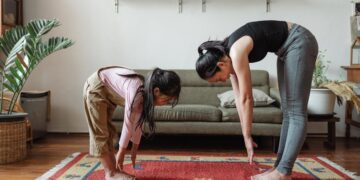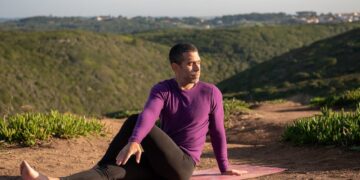5 Simple Mindfulness Exercises for Teens: Boost Well-Being Today
In today’s fast-paced world, teens face a myriad of pressures from schoolwork and social interactions to expectations from family and society at large. It can be a lot to handle. But what if there was a way to reduce stress, enhance focus, and boost your overall well-being without any fancy tools or complex strategies? Mindfulness—the art of staying present and engaged in the moment—offers just that. This post dives into 5 simple mindfulness exercises for teens: boost well-being today through easy-to-implement, practical steps.
What is Mindfulness?
Before diving into the exercises, let’s briefly understand what mindfulness is. Mindfulness is the practice of being aware and fully present in the moment, without judgment. It’s about noticing your thoughts, feelings, and physical sensations as they occur. This practice can help manage stress, reduce anxiety, and promote emotional health.
1. Mindful Breathing
How to Do It:
Mindful breathing is a foundational mindfulness technique and a great starting point. Here’s a simple way to practice it:
- Find a Quiet Place: Sit in a quiet and comfortable spot.
- Focus On Your Breath: Close your eyes and take deep, slow breaths. Inhale through your nose and exhale through your mouth.
- Count Your Breaths: As you breathe in, count to four, hold for one second, then slowly exhale while counting to four again.
Why It Helps:
This exercise helps bring your focus back to the present, slowing down racing thoughts. It’s particularly useful during stressful situations or when you feel overwhelmed.
2. Sensory Awareness
How to Do It:
Engaging your senses can powerfully anchor you in the present moment. Here’s how to use this technique:
- Choose one sense to focus on, like hearing.
- Notice the Details: If you’re focusing on hearing, pay attention to the sounds around you, whether it’s the ticking of a clock, birds chirping, or distant traffic.
Why It Helps:
By concentrating on one sense, you reduce mental clutter and enhance your attention, helping you stay grounded and calm.
3. The Body Scan
How to Do It:
A body scan encourages you to tune into physical sensations throughout different parts of your body:
- Lie Down or Sit Comfortably.
- Start at Your Toes: Focus on the sensations in your toes and gradually move up through your feet, legs, torso, arms, and head, noticing any tension or discomfort.
Why It Helps:
The body scan is effective in releasing physical tension and establishing a mind-body connection that fosters overall relaxation.
4. Mindful Eating
How to Do It:
Turn a routine activity like eating into a mindfulness exercise:
- Choose a Small Piece of Food, such as a piece of fruit.
- Engage Your Senses: Before eating, look at the food, smell it, and think about its journey to your plate.
- Eat Slowly: Chew slowly, savoring the taste and texture of the food.
Why It Helps:
Mindful eating helps improve your relationship with food and can aid in digestion and satisfaction with meals.
5. Walking Meditation
How to Do It:
This exercise transforms a simple walk into a rejuvenating practice:
- Find a Quiet Place to Walk—it could be a park or just up and down a room.
- Focus on Your Feet: Pay attention to the feel of the ground under your feet with each step.
- Match Your Breathing with Your Steps: Inhale for three steps, hold for one, and exhale for three steps.
Why It Helps:
Walking meditation increases physical energy and calms the mind, which is a great way to clear your head and stretch your legs if you’ve been sitting for a while.
Conclusion: Embrace Mindfulness for Enhanced Well-being
These 5 simple mindfulness exercises for teens: boost well-being today by helping to manage stress, increase your focus, and develop greater resilience against daily pressures. Whether it’s through breathing deeply, tuning into your senses, scanning your body, savoring a meal, or walking mindfully, each practice offers a unique pathway to greater emotional and psychological health.
Remember, like any skill, mindfulness gets easier with practice. Start small—just a few minutes a day—and build from there. Over time, you will likely notice a profound shift in how you relate to the world around you, leading to a more fulfilled and balanced life.


































































